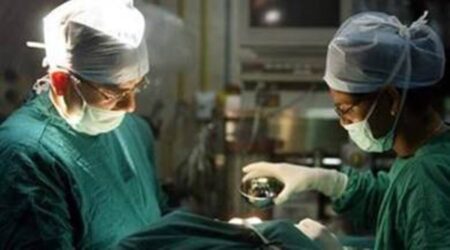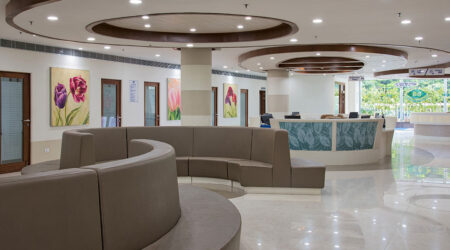Neurological Rehabilitation
Neurological Rehabilitation involves various interventions, physical, mental, emotional, or social, which help to reintegrate a person with an impairment or disability back into society. Neurological Rehabilitation is an integral part of our rehabilitation program at Jupiter Hospital, a one-stop comprehensive destination for all the services put together. We offer a wide spectrum of facilities under one roof backed by a team of doctors, who assess whether the program is working or not through functional outcome measures.
In addition to the multidisciplinary rehabilitation team, the Rehabilitation Centre has a luxurious rehab lab, spread over 2000 sq ft, with all the advanced rehabilitation technologies and modalities in place, including

Advanced Rehabilitation Technologies And Modalities
- Robotic rehabilitation
- Computer-assisted rehabilitation Sensor-based rehab Virtual reality
- Advancing human ability with advanced robotic and computer-assisted Technology
- Aqua rehab in Asia's first underwater gym
- Multi-disciplinary Rehab team
- Comprehensive and coordinated inpatient Rehab program with ease of access to the Rehab lab
State of the art interventions offered

Amadeo
It is a robotic computer-assisted rehabilitation device for the hand. The machine can be used to improve voluntary control, strength, reduce spasticity, etc. The patient's hand is attached to a machine and he is asked to play a game. Example of task-specific training.

Pablo
It is a sensor-based computer-assisted rehabilitation device that can help to improve the voluntary control and function of the wrist, elbow and hand. It uses motion sensors to improve the movement of the upper limbs, making it easier to carry out normal day to day functions. Tablet device uses hand sensors which can improve particular function. This has also been included in our sports rehabilitation program where we have used the hand sensor to improve the action of bowling in cricket players.

Diego
It is also a computer-assisted robotic rehabilitation device, used primarily for the rehabilitation of the shoulder and the arm. It works on the principle of intelligent gravity compensation, in which the weight of the limb is relieved and the exercise is given with virtual reality, to improve voluntary control.

Lokostation
It is a bodyweight supported, lower limb, robotic gait trainer. The patient is suspended using a suspension vest, and the legs are fitted in the orthosis. The machine passively stimulates the action of walking, thereby enabling the ability to walk-in patients with complete or partial paralysis of the lower limb.

Myro
It is a sensor-based computer-assisted device to improve cognitive function and enhance hand-eye coordination. It works on various cognitive functions like attention, memory, orientation to time, place and person, abstract thinking, judgement, calculations and sense of direction.

Tymo
It is a sensor-based computer-assisted device, that has a force plate that is connected to the computer with wireless Bluetooth. It can be used to improve the dynamic balance while sitting, standing and also while sitting to standing. The patient is allowed to play the game, which can be controlled by changing the position on the force plate.

Anti-gravity treadmill
The technology can be used for a variety of different cases like neurological, as well as muscular, skeletal and orthopaedic rehabilitation. The patient is asked to wear special garments and then zipped up inside the airtight compartment of the machine. The part of the body which is inside the machine becomes separate. The technique helps to relieve the weight of the patient from 20 to 80 per cent and then the patient can use the treadmill at different speeds and varying levels of inclination. This helps to improve muscle power, coordination of the Lower Limbs and also the endurance of the patient.

HP Cosmos
It is an advanced treadmill that has a sensor base. The technology can help to determine and record the foot pressure. It has a virtual reality mode in which the system is connected to an LED screen in which the patient can see himself walking on a road or track and the steps can be seen in blue. The patient can walk in real-time with the help of a bodyweight support system so that he does not fall. The HP Cosmos also has a Robo walk mode, which is predominantly used for gait conversion.
Rehabilitation plays a prime role in helping patients overcome various challenges and live life independently.
Gallery
Patients Speak
Hear the heartwarming stories of patients overcoming difficult afflictions
















 View Map
View Map Book an Appointment
Book an Appointment Find a Doctor
Find a Doctor Health Check-up
Health Check-up









 Find a Doctor
Find a Doctor Health Checkup
Health Checkup Book an Appointment
Book an Appointment